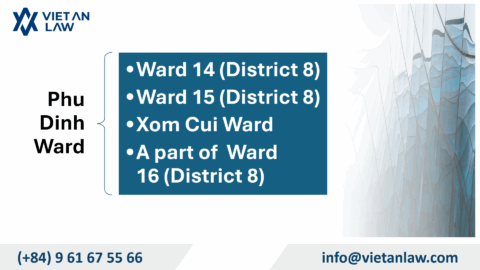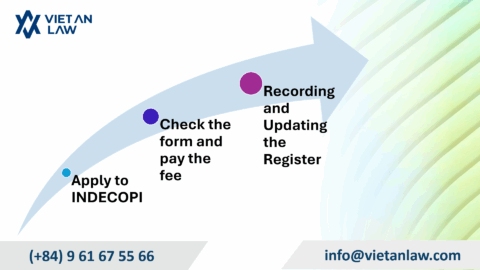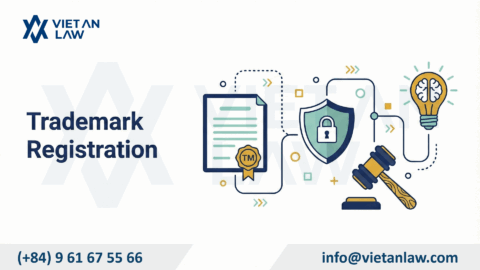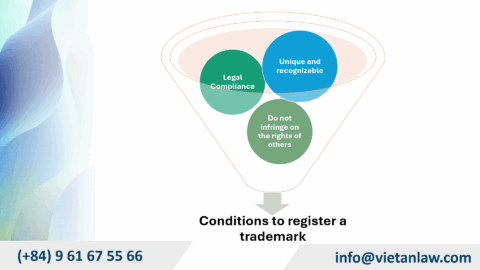India is strategically located, connected to major markets in Asia, the Middle East and Africa. This creates many opportunities for Indian businesses to export goods and services. India’s economy is diversified with various industries, including agriculture, manufacturing, services, and high technology. This minimizes economic risks and promotes stable growth. India has a population of more than 1.4 billion people, making it the world’s second-largest domestic market. This creates a huge amount of demand for goods and services, fueling economic growth. In order to attract foreign investment, the Indian government has implemented many reforms to attract foreign investment. This has helped improve the business environment and created more opportunities for investors. Therefore, more and more businesses are expanding their business scope in India. To be able to distinguish your brand from other competitors, businesses need to pay attention to trademark registration procedures. Viet An Law Firm would like to guide customers through the preliminary procedures for trademark registration in India through the article below.

Definition of trademark
According to the Indian Trademark Act 1999 (specifically Section 2(zb)), a trademark is defined as: “A mark that can represent visually and has the ability to distinguish a person’s goods or services from others, which may include the shape of goods, packaging and color combinations” In summary, trademarks are understood as
Visual representation: The trademark must be able to represent visually. This includes letters, logos, symbols, designs, merchandise shapes or packaging, and even color combinations.
Distinguishable: The trademark must be unique enough to distinguish the origin of the goods or services from competitors. The description should not be generic or lacks uniqueness.
For goods or services: Trademarks can be used for both tangible products (goods) and intangible services.
Types of registerable trademarks
Product mark: This is the most common type of trademark and is used to distinguish one company’s tangible product from another. Comprise:
Service mark: Similar to product marks, but used to identify and distinguish services provided by one provider from another. Examples include logos, slogans, or catchphrases related to a particular service. Collective mark: This trademark identifies a group or association and its members are allowed to use the trademark on their goods or services. Examples include certificates or logos used by cooperatives or professional associations.
Certification mark: This mark does not identify the origin of a product or service, but guarantees a certain standard, quality or provenance. Common examples include organic food certification or quality control marks.
Commercial packaging: This is the overall visual representation of a product, including packaging, color schemes, and design elements. If the commercial packaging is unique enough, it can be protected as a trademark.
In addition, India recognizes some of the following types of trademarks:
Shape mark: The three-dimensional shape of the product itself can be a trademark if it is unique enough (e.g. Coca-Cola bottle).
Audio mark: Sounds specifically associated with a brand, such as brand music or product sound effects, may also be registered as trademarks.
Note: not all signs or symbols can be registered as trademarks. The trademark must:
Unique: It must be unique enough to differentiate the applicant’s product or service from its competitors. Legal: It must not infringe any existing trademarks or be misleading.
Visual representation: It must be able to represent visually.
Applicant name and address: The legal name and full contact information of the applicant, including phone number and email.
Type of applicant: Indicates whether the applicant is an individual, company, or other legal entity. (Examples: Sole Proprietorship, Partnership, etc.) Trademark Information: Images that represent trademarks: These can be image files (JPEG, PNG) or a clear and detailed description of the trademark (lettering, logo, design, etc.).
Class of goods and services: A clear and specific list of the goods or services the applicant intends to use the trademark for. Applicants can use the International Classification of Goods and Services (also called the Nice Classification for goods and the Vienna Classification for services) for ease of reference. These classification systems classify products and services, making it easier for the Trademark Office to review an applicant’s application.
After having all the information, the applicant needs to fill out the TM-A form, which can be downloaded at the following link: https://www.ipindia.gov.in/form-and-fees-tm.htm
Claim of Use (Optional): If the applicant has started using the trademark in India, the claimant may submit a statement of use with evidence (e.g. product packaging, marketing materials) to potentially expedite the registration process.
Authorization (Optional): If a petitioner uses an attorney or agent to file the application, the petitioner may need a Authorization that allows them to act on the petitioner’s behalf.
Registration fee: The trademark registration fee in India depends on a number of factors, including: Number of layers of goods and services: A government-set fee is charged per class of goods or services for which the applicant registers a trademark.
Applicant Entity: The fee structure is slightly different for individuals/sole proprietorship/start-ups and others (corporations, partnerships, etc.)
For individuals/sole proprietorship/start-ups: Application fee (per class): ₹4,500 (approximately €55 as of 28 March 2024)
For corporate/partnership, etc.: Application fee (per class): ₹9,000 (approximately €110 as of 28 March 2024)
Additional Fees (Optional): Usage Statement Fee: If the applicant submits a usage statement with the (optional) application, additional fees may apply.
How to file for trademark registration in India
To file for trademark protection in India, you can apply using the following filing methods:
The Madrid system is a convenient and cost-effective solution for global trademark registration and management. File a single international trademark application and pay a one-time fee to apply for protection in up to 130 countries. Claimants can modify, renew or expand their global trademark portfolio through a centralized system.
The Madrid Applications include the Madrid Singles of Vietnamese origin and the Madrid Applications with Indian designations.
For the Madrid Application of Vietnamese origin, the applicant must submit through the state management agency for industrial property rights, i.e. the National Office of Intellectual Property of Vietnam. According to Article 25 of Decree 65/2023/ND-CP, a Madrid application of Vietnamese origin includes the following documents:
The fees include:
If you want to file a trademark application in India, please contact Viet An Law Firm for the most effective support.




